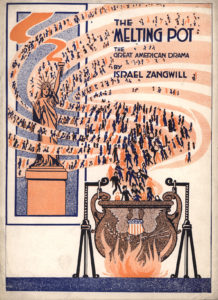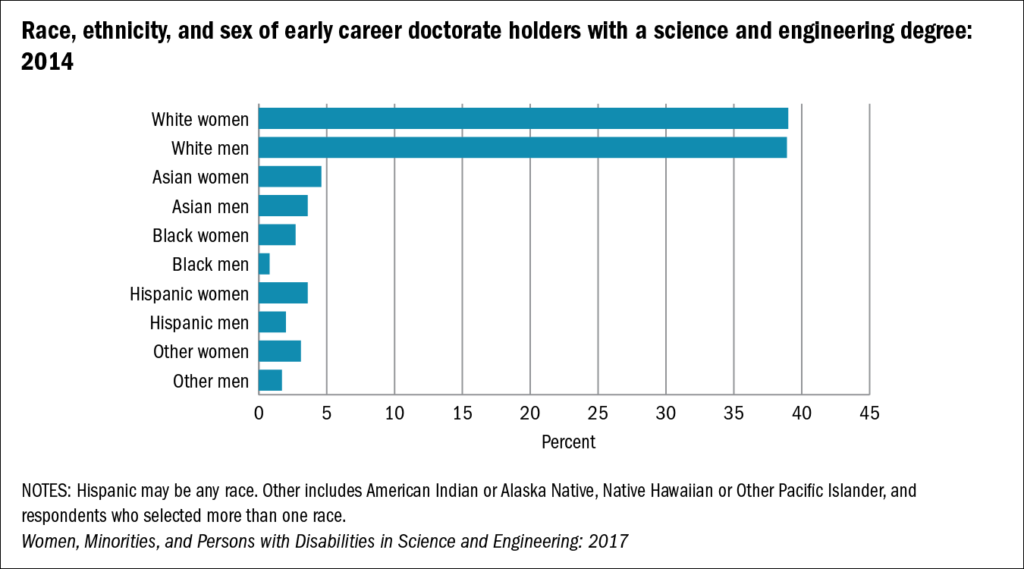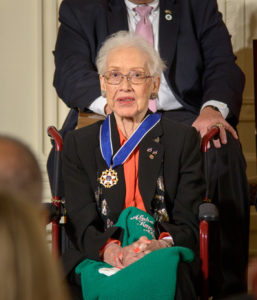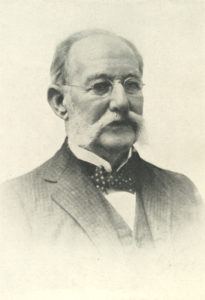

United States as a “Melting Pot”
Indigenous peoples inhabited the land, that is now known as the US, many generations before Christopher Columbus arrived. These people were culturally and linguistically diverse and since the founding of the US in 1776, the number of languages, customs, and lifestyles in this land has dramatically increased due to constant migration to the US from all corners of the globe. This diversity gave rise to the US being called a “Melting Pot” – a metaphor for the different populations coming together to form one country. With this diversity though, comes discrimination, creating an environment that has been adversarial, and hardly a united and representative nation.
To acknowledge the different contributions of diverse groups in this country, a calendar of months to recognize diversity has been established. For example, February is African-American History Month, March is Women’s History Month, May is Asian and Pacific Islander Heritage Month, September 15th to October 15th is Hispanic Heritage Month, and November is Native American Heritage Month. The majority of people whose heritage, culture, and value to this country should be recognized during these months are often overlooked, underrepresented, and under-appreciated. In addition to highlighting their achievements for one month, it is important to continuously recognize their voices and contributions. This article aims to stress the importance of representation and intersectionality, particularly in Science, Technology, Engineering and Mathematics (STEM) fields, and to celebrate those who have achieved success in their fields despite many obstacles.
Identity and Intersectionality
Coined by Kimberlé Crenshaw, intersectionality is the concept of overlapping social identities leading to a more severe form of discrimination. As an example, look at the colored circles to the right. Each one could represent an element of discrimination such as race, religion, gender, sexual orientation, disability, class, age, etc. In the top left, there is one yellow circle. Imagine this circle represents women (gender). This represents one possible layer of discrimination. To the right, the overlapping yellow and pink circles represent increasing layers, or intersections, of identities. The yellow circle again represents women, and the pink circle may represent African-Americans. Women

encounter one dimension of discrimination (gender), as do African-Americans (race). However, being an African-American woman means their burden is now two-fold: they have two dimensions of discrimination, being a woman and being African-American. As a person has more dimensions (as seen in the two figures in the bottom) that do not fit with the dominant social norm, those dimensions add up to increasing amounts of discrimination. Identity and intersectionality can be especially challenging for people who have combined ancestry. Often, people don’t know with whom or how they should or can associate, leading to an increased identity anxiety and discrimination.
It is important to recognize and understand the concept of intersectionality to realize that discrimination is complex to rectify. However, it is crucial to try to eliminate the inequalities that come forth from discrimination and intersectionality since inequalities that lead to oppression can restrict the future and potential of underrepresented groups. The more we help each other, the better the world becomes for us.
*Race is used above because it is commonly used to discriminate, although race is a social construct and has no scientific basis. For a distinction between race and ethnicity, click here.*
The Lack of and Need for STEM Workers
STEM jobs drive the global economy by being one of the top sources of innovation and are growing faster than any other public or private sector in the US. Within the next 10 years, there will be over 1 million jobs in STEM available, however there are not and will not be enough scientists to fill all of the positions. Temporary residents (including international students) are immigrating to the US to fill this gap through various visas (F1, J, H1B, etc.), even though we have enough students who could someday fill the gap.
Underrepresented groups embody roughly 36% of the population in the US, yet represent less than 20% of the STEM workforce. Due to discrimination (particularly intersectionality) and lack of representation, support, and youth awareness, the potential of our minority peers in STEM has been largely untapped.

Aside from the lack of minority students earning STEM degrees, their path to success gets more challenging following graduation. They enter the workforce but don’t necessarily stay because of constant threats they face, may they be racial bias, stereotype threat, microaggressions from colleagues, or just lack of cultural knowledge among mentors and colleagues. Boosting diversity can help boost the status of underrepresented groups, and get rid of threats minorities face in the workforce. It is a lot easier to see yourself as a scientist if you see others that share your experiences or culture. Since there are so few underrepresented students in Master’s and PhD programs in STEM, the challenges are compounded. If no one shares a lifestyle like yours, how can you relate?
The general population has a particular proportion of women and minorities, but that proportion is underrepresented in STEM. Since STEM fields and the world we live in are multidimensional, the people working in those fields should represent that multidimensionality. It also brings us together as a community.
Diversity Enhances Innovation
Diversity allows for new interpretations and exchanges of ideas and data. This encourages innovative and diverse ways of thinking and tackling problems leading to a greater likelihood of coming up with real solutions. The different viewpoints (based, in part, through individual differences in experiences) that each individual brings to the table helps foster teamwork and collaborations. If all people are from the same background and same education, they might all look at a problem the same way. Diversity helps us solve a common problem by bringing different ideas into the dialogue. For example, women and men differ anatomically and physiologically and without taking this difference into account when designing products, a product may not be helpful or may even be harmful to the user. Women on average are shorter than men, so when driving, generally are physically closer to the steering wheel. When airbags were first designed, this height difference between men and women wasn’t taken into account, and women experienced a more forceful impact from sitting closer to the steering wheel. This resulted in more female deaths by airbags than accidents.
Another more serious example is the creation and production of drugs/medications. Clinical trials are often homogeneous and fail to include adequate numbers of women as they are primarily tested on men. Due to physiological differences between men and women, some of these drugs can be helpful to men, but not to women, or could be harmful. This is also relevant to ethnicity and ancestry. Certain groups of people are more prone to certain diseases or have different physiology from another group, and if a medication was cleared for one of those groups, it doesn’t mean it will work well for the other. Considering the face of the US population is changing and by 2042 African-Americans and Latinos are predicted to be the majority minority (over 50% of the US population), it is critical to include underrepresented groups in clinical trials that lead to drug development and application.
Getting Minority Students into STEM Fields
To fill the available positions now and in the future, it is important to reach out to students of all backgrounds and abilities, starting at a young age, and to let them know what opportunities are available to them. It is also important to spark an interest and passion for science in these students, and to help and support them as they advance through their education. Allowing resources to be available to all students of all backgrounds is essential. Read a previous article about the divide between rural and urban areas in the US due to lack of internet access, highlighting the effect of inconsistent distribution of resources.
Resources and education play a critical role in the development of STEM students and statistics show that Americans in general don’t perform well in STEM fields and are consistently behind much of the world. Thus, the education of these fields needs to be reexamined. At the University of Maryland – Baltimore County (UMBC), president Dr. Freeman Hrabowski has created an environment that fosters excellence in STEM skills, guiding UMBC to be the leading university in the country to produce African-American students that earn PhD and MD-PhD degrees in STEM fields. He restructured the way STEM classes were taught and created four pillars of STEM education to “get underrepresented students to the top”. These pillars began as a way to help the most underrepresented students succeed in STEM, and by helping and redesigning education for the most underrepresented students, students of all backgrounds at UMBC are now more successful STEM fields. Dr. Hraboski’s four pillars “empower students to take ownership of their education and love to learn,” while fostering a collaborative environment. The Meyerhoff Scholars Program at UMBC was created to use the four pillars of STEM education with underrepresented groups and UNC has worked with UMBC to create a similar program, called Chancellor’s Science Scholars Program. Hopefully, more programs like these will arise around the country, and STEM diversity will increase, along with the number of successful students in STEM fields.
Attitudes Towards Minorities in STEM Fields
Dr. George M. Langford, a previous UNC faculty member and advocate for minorities in STEM fields, wrote about the very topic, asking educators to step up and recognize what needs to be done for underrepresented students:
“As the demographics in the United States evolve, we as educators must work to increase the number of minority students in these disciplines, disciplines where they remain underrepresented. Efforts have been underway to improve minority representation for several decades… and there has been improvement, just not as much as we’d like. Many are imminently qualified, but denied for discriminatory reasons.
Though there is much work to be done to attract minorities to and propel them in the STEM disciplines, I believe the silver bullet is a conscious effort on behalf of all educators to provide passionate mentorship to prospective scientists.
By comparison, the scientific community has made progress but much change is needed before we will see the numbers improve to the extent that will have real impact. Racial bias lingers and differences in the day-to-day experiences of minority scientists persist. Stereotype threat continues to derail careers and compromise performance. Even the best mentors fail to realize the need to provide culturally competent guidance to ensure minority postdoctoral fellows who leave their labs start their careers with the same level of productivity as their white counterparts. These challenges are urgent and must be addressed sooner rather than later to maintain our country’s competitive positioning in the global community.”
To support your peers at UNC in STEM Fields, look to join or support:
- BGPSA – UNC Black Graduate and Professional Student Association
- FNGC – UNC First Nations Graduate Circle
- IMSD – UNC Initiative for Maximizing Student Diversity
- MSC – UNC Minority Student Caucus
- SACNAS – UNC Society for the Advancement of Chicanos/Hispanics in Science
- Stem Pride of the Triangle – Research Triangle STEM LGBTQ+ group
- WINS – UNC Women in Science
Unsung Minority Heroes in STEM
To recognize the unsung minority heroes in STEM fields from the U.S. and around the world, below is a list of those heroes whose innovations and contributions have improved the world we live in. Most importantly, this list is to emphasize that everyone is capable of achieving greatness, if only given the opportunity. One characteristic to note about the unsung heroes is that, besides being successful citizens and scientists, a majority of them were also civil rights activists.
Notable Minority Women in STEM Fields

- Nita Ahuja – Indian surgeon; 1st female Surgeon in Chief at Yale
- Lori Alvord – Native American surgeon
- Farida Bedwei – Ghanian software engineer with cerebral palsy
- Elizabeth Blackwell – English physician; 1st female Doctor of Medicine
- Marie Curie – Polish physicist; 1st woman to win a Nobel Prize, 1st person to win two Nobel Prizes, and only woman to hold Nobel Prizes in two different fields (Physics and Chemistry)
- Wanda Diaz Merced – Deaf Puerto Rican astronomer
- Rosalind Franklin – English scientist; work led to elucidation of DNA structure
- Temple Grandin – Autistic American animal behaviorist
- Grace Hopper – American Naval Officer, mathematician, and computer scientist
- Mae Carol Jemison – African-American engineer and astronaut; 1st female African-American astronaut
- Katherine Johnson – African-American NASA mathematician
- Hedy Lamarr – Austrian inventor; laid foundation for Bluetooth and GPS
- Ada Lovelace – English mathematician; laid foundation for computer science
- Jane Luu – Vietnamese-American astronomer; discovered and characterized the Kuiper Belt
- Maryam Mirzakhani – Iranian mathematician; 1st woman and Iranian to win the Fields Medal
- Florence Nightingale – English surse/statistician; laid foundation for the field of Nursing
- Sally Ride – LGBTQ+ American astronaut; 1st American woman in space
- Dorothy Vaughan – African-American NASA mathematician
- Ada Yonath – Jewish-Israeli biochemist; pioneered the structure of the ribosome
- Lydia Villa-Komaroff – Biochemist; 3rd Mexican-American woman in the US to receive her PhD in STEM
Notable Minority Men in STEM Fields

- Ralph Braun – American inventor with muscular dystrophy; invented first motorized scooter/wheelchair
- George Washington Carver – African-American inventor
- Carlos Juan Finlay – Cuban physician and epidemiologist; pioneered the study of Yellow Fever
- Walter Lincoln Hawkins – African-American chemist
- Percy Lavon Julian – African-American chemist; pioneered the chemical synthesis of medicinal drugs from plants
- Frank Kameny – LGBTQ+ physicist
- Mario Molina – Mexican chemist; helped discover the Antarctic Ozone hole
- Alan Turing – LGBTQ+ computer scientist
- Neil DeGrasse Tyson – African-American astrophysicist
- Daniel Hale Williams – African-American surgeon; opened 1st interracial hospital, performed one of the first successful open heart surgeries.
Peer edited by Nicole Smiddy and Gowri Natarajan.
Follow us on social media and never miss an article: